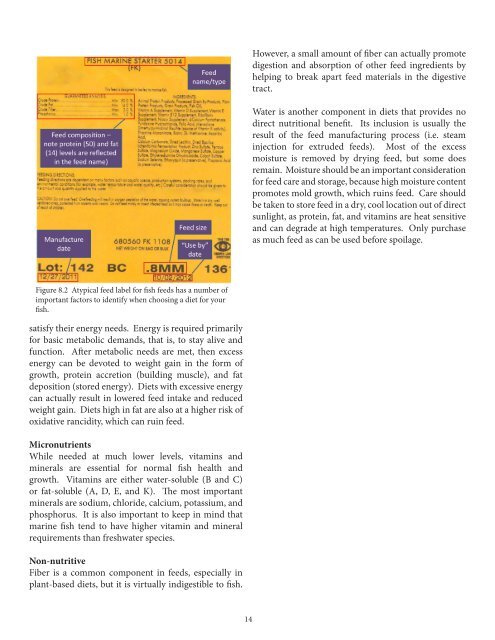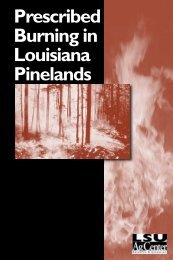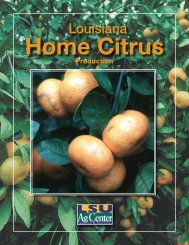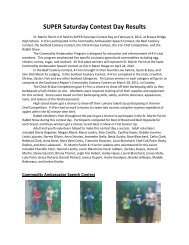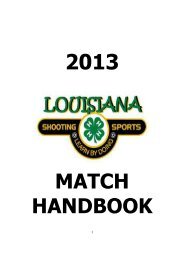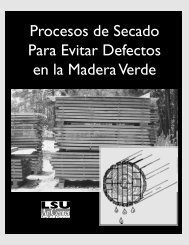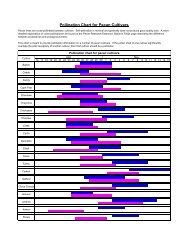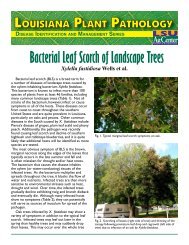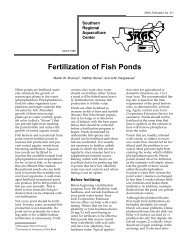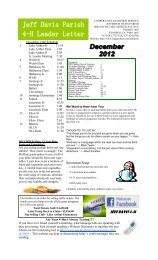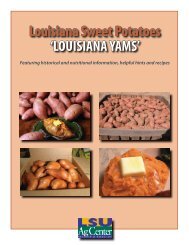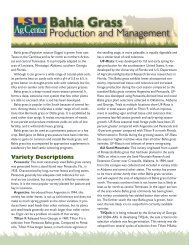Cocahoe Minnow - The LSU AgCenter
Cocahoe Minnow - The LSU AgCenter
Cocahoe Minnow - The LSU AgCenter
You also want an ePaper? Increase the reach of your titles
YUMPU automatically turns print PDFs into web optimized ePapers that Google loves.
Figure 8.2 Atypical feed label for fish feeds has a number of<br />
important factors to identify when choosing a diet for your<br />
fish.<br />
satisfy their energy needs. Energy is required primarily<br />
for basic metabolic demands, that is, to stay alive and<br />
function. After metabolic needs are met, then excess<br />
energy can be devoted to weight gain in the form of<br />
growth, protein accretion (building muscle), and fat<br />
deposition (stored energy). Diets with excessive energy<br />
can actually result in lowered feed intake and reduced<br />
weight gain. Diets high in fat are also at a higher risk of<br />
oxidative rancidity, which can ruin feed.<br />
Micronutrients<br />
While needed at much lower levels, vitamins and<br />
minerals are essential for normal fish health and<br />
growth. Vitamins are either water-soluble (B and C)<br />
or fat-soluble (A, D, E, and K). <strong>The</strong> most important<br />
minerals are sodium, chloride, calcium, potassium, and<br />
phosphorus. It is also important to keep in mind that<br />
marine fish tend to have higher vitamin and mineral<br />
requirements than freshwater species.<br />
Non-nutritive<br />
Fiber is a common component in feeds, especially in<br />
plant-based diets, but it is virtually indigestible to fish.<br />
14<br />
However, a small amount of fiber can actually promote<br />
digestion and absorption of other feed ingredients by<br />
helping to break apart feed materials in the digestive<br />
tract.<br />
Water is another component in diets that provides no<br />
direct nutritional benefit. Its inclusion is usually the<br />
result of the feed manufacturing process (i.e. steam<br />
injection for extruded feeds). Most of the excess<br />
moisture is removed by drying feed, but some does<br />
remain. Moisture should be an important consideration<br />
for feed care and storage, because high moisture content<br />
promotes mold growth, which ruins feed. Care should<br />
be taken to store feed in a dry, cool location out of direct<br />
sunlight, as protein, fat, and vitamins are heat sensitive<br />
and can degrade at high temperatures. Only purchase<br />
as much feed as can be used before spoilage.


